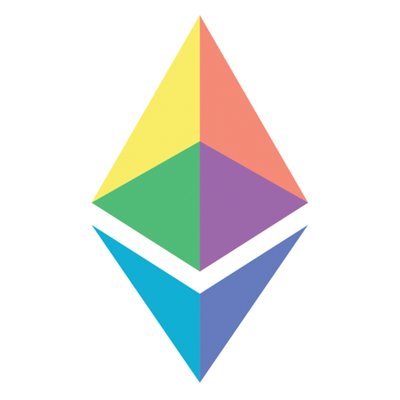NFTs are clearly one of the hottest topics in crypto at the moment. CryptoPunks, Autoglyphs, Bored Apes, Pudgy Penguins – some of them selling for hundreds of thousands or even millions of dollars.
So are NFTs just a hype or a paradigm change? What are some of the most interesting NFTs out there? And what are the biggest challenges of this new space? You’ll find answers to these questions in this article.
NFTs
Let’s start with a quick recap of what NFTs are in the first place.
An NFT or a Non-Fungible Token is a way of representing ownership in the digital world.
Since the dawn of our civilization, humans have been collecting rare items. From seashells and gems to coins, post stamps and Pokemon cards. NFTs are just digital versions of that.
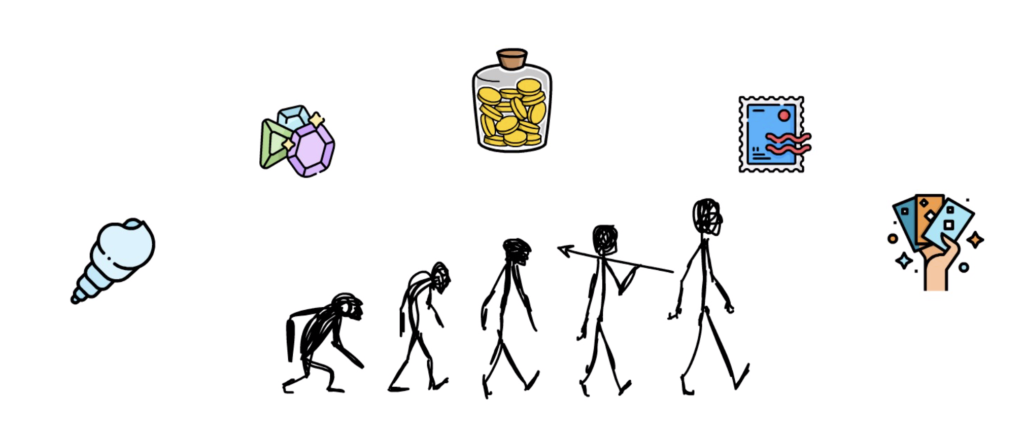
Collectibles, pieces of art, game items, domain names and even complex bespoke financial instruments – all of these can be represented as NFTs.
In contrast to cryptocurrencies like Bitcoin or Ether where each unit is interchangeable, NFTs are unique – at least in most cases. The creator of an NFT project can decide on the exact parameters of their NFTs.
Some of the common examples are:
-only 1 NFT per unique piece of art – artists that create individual pieces like Beeple follow this approach,
-a collection where each item has a unique combination of different traits – CryptoPunks, Bored Apes
-a collection where there is a set number of the same item in the collection – usually used for card collectibles like My Curio Cards
The scarcity of individual NFTs can be verified on the blockchain where the project was created. For example, we can tell with 100% certainty that there were only 10,000 original CryptoPunks created on Ethereum. The authenticity of NFTs can also be instantly verified by checking that the NFT we own was created using the original smart contract of a particular project. The blockchain also provides a quick way of checking the provenance of each individual NFT which is basically the history of its ownership.
If you’d like to dive a bit deeper into the technical aspects of NFTs and learn, for example, what fungibility is or what different NFT standards like ERC-721 and ERC-1155 are, you can check out my previous article about NFTs here.
Now, let’s go through some of the most popular NFT projects out there.
CryptoPunks
We couldn’t start this with anything other than CryptoPunks.

CryptoPunks, very often called just “punks”, are one of the oldest and one of the most significant NFTs.
The project that was pretty much forgotten about during the depth of the 2018-2019 bear market resurfaced at the end of 2020 and took the world by storm.
CryptoPunks, launched in June 2017 by LarvaLabs, a two-person team, was one of the first NFT projects presented as a collection of similar items where the uniqueness of each item was achieved by having a distinctive combination of different traits such as hats, sunglasses or hairstyles. Each punk is a unique, algorithmically generated, 24×24 pixel art image.
In 2021, it’s crazy to think that CryptoPunks, now worth around $350k for the cheapest one, were once claimable for free and users were able to mint them by paying a few dollars for an Ethereum transaction.
CryptoPunks initially started gaining popularity within the crypto community itself, but this quickly expanded to the outside world with famous artists and celebrities joining the bandwagon. Jay Z, Odell Beckham Jr., Steve Aoki to name just a few.
In May 2021, a collection of 9 punks was sold at Christie’s, one of the most famous auction houses, for a whopping $16.9m. Another prominent auction house – Sotheby’s sold a rare alien punk for an astonishing $11.8m in June.
In August 2021, Visa announced a purchase of a CryptoPunk as an addition to their collection focused on historically significant items in commerce. This basically skyrocketed the floor price for a punk, which is the lowest amount that someone is willing to sell a punk for, from around $100k to as much as $400k.
CryptoPunks are clearly one of the most significant NFTs and are very often referred to as the holy grail for any NFT collector.
The PFP Mania
Punks also initiated another phenomenon – the PFP mania.
PFP, which stands for … “profile picture”, is a type of NFT that is suitable for an online avatar. Punk owners, including the previously mentioned celebrities, started using punks as their profile pictures on Twitter. This quickly led to the creation of new PFP-focused NFT projects as people who were already priced out of punks started searching for something more affordable.
The launch of multiple PFP-focused projects ignited the PFP mania with people changing their profile pictures to NFTs on Twitter, Discord, Telegram or even … LinkedIn.
One of the earliest projects that benefited from the PFP phenomenon was Bored Apes Yacht Club, often just called Bored Apes or BAYC.

Bored Apes, created in April 2021 by YugaLabs, launched a 10,000-element NFT collection featuring high-resolution image art of apes with different traits. From common apes with normal fur and beanies to extremely rare ones with golden skin and crowns.
Yacht Club in the name wasn’t chosen by accident as each NFT from the collection acts like a membership card and grants access to member-only benefits, one of them being a merch shop.
Bored Apes, initially sold by YugoLabs for 0.08 ETH, are now trading in the range of 40 ETH for the cheapest ones. BAYC is a good example of a project that created a strong community of NFT holders.
Similarly to CryptoPunks, Bored Apes will be featured in one of the upcoming Christie’s and Sotheby’s auctions.
The PFP mania also resulted in the creation of multiple other PFP NFT projects. Most of them were just low-effort clones of one of the popular projects, but there were also exceptions. Some of them include.
CoolCatNFTs, featuring a collection of blue cats with different features, was created by an artist drawing the same blue cat for over 10 years.
Pudgy Penguins also gained a lot of traction and were even featured in The New York Times. Their main feature? They are super cute.
World of Women, a collection featuring unique, cool and diverse women was created with the aim of bringing more diversity and representation into the NFT space.
Besides completely new NFTs, the teams behind already successful projects can decide to launch new collections very often inspired by their original work.
The two most prominent examples are Meebits released by the creators of CryptoPunks and Mutant Apes released by the creators of Bored Apes. This approach allows for expanding the existing communities and including people who might have been priced out of the original collections.
Although PFPs seem to be the main focus of the NFT community, let’s not forget about other super interesting niches within the NFT space, one of which is generative art.
Generative Art
Generative art lies at the intersection of art and code.
Artists, instead of drawing pieces of art by themselves, write an algorithm that generates the art.
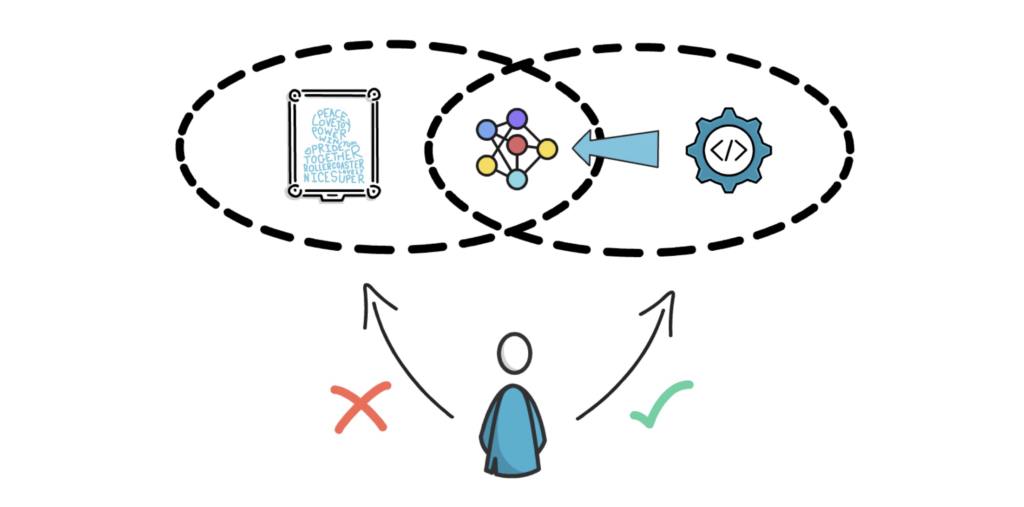
The art is always generated at the time of minting a new NFT and uses an input parameter such as a transaction hash, that will be forever associated with this particular token. This allows the users to feel like they are taking part in the art creation as two different users minting a piece of art from the same collection would end up with different results.
Autoglyphs are a prime example of generative art. The collection of 512 items, also created by LarvaLabs, was generated purely on-chain. This was possible as the art is created out of basic ASCII characters and can be displayed as a result of executing the Autoglyphs smart contract itself. At the time of creation, each Autoglyph had a different probability for drawing certain patterns, hence some pieces are more rare than others. At the time of writing this article, the cheapest Autoglyphs are listed for 475 ETH which is worth around $1.8m.
Other extremely popular pieces of generative art come from Art Blocks.
The art featured on the Art Blocks platform is created using a script written in a programming language called 5p.js. Each collection has its own script that is stored on the Ethereum blockchain.
A program written in 5p.js can generate different shapes with different organizations, textures or colours depending on what the creator wants to achieve.
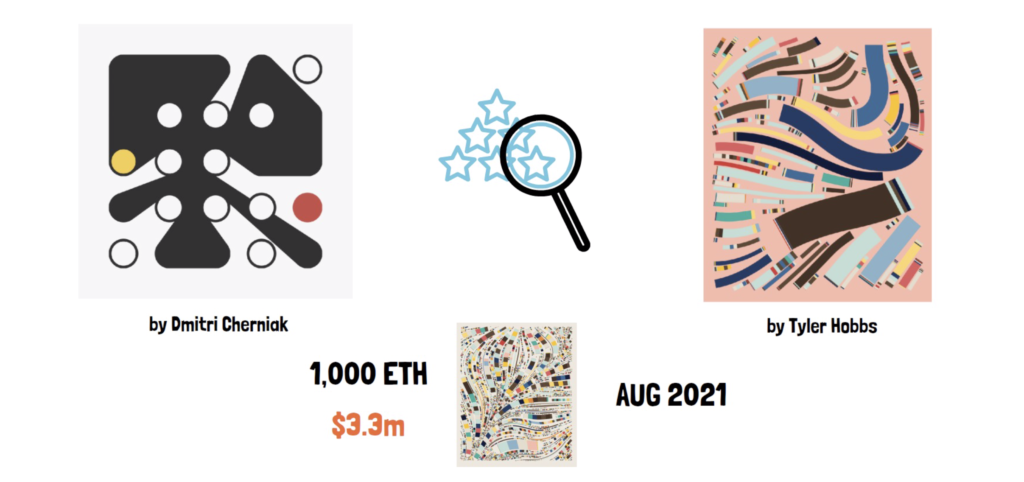
Art Blocks Curated is the most prestigious collection with the most sought after pieces of generative art such as Ringer by Dmitri Cherniak and Fidenza by Tyler Hobbs. The most expensive Fidenza sold for 1,000 ETH worth $3.3m at the time of purchase in August 2021.
Generative art explores an interesting concept of artists becoming coders. Or maybe coders becoming artists.
What happens if a generative algorithm could be created without any human help. Sounds quite Sci-fi for now, but I wouldn’t be surprised if in the future the most expensive piece of art was an NFT created by some kind of an AI.
Other NFTs
Besides PFPs and generative art, there are plenty of other types of NFTs available.
Artists can create NFTs for their individual pieces of art. A good example is Beeple who sold the most expensive NFT to date representing 5000 days of his work for $69M at Christie’s in March 2021. Fun fact, if Beeple kept the $69m in ETH it would be worth over $140m now.
Gaming is another area where NFTs have become more and more important.
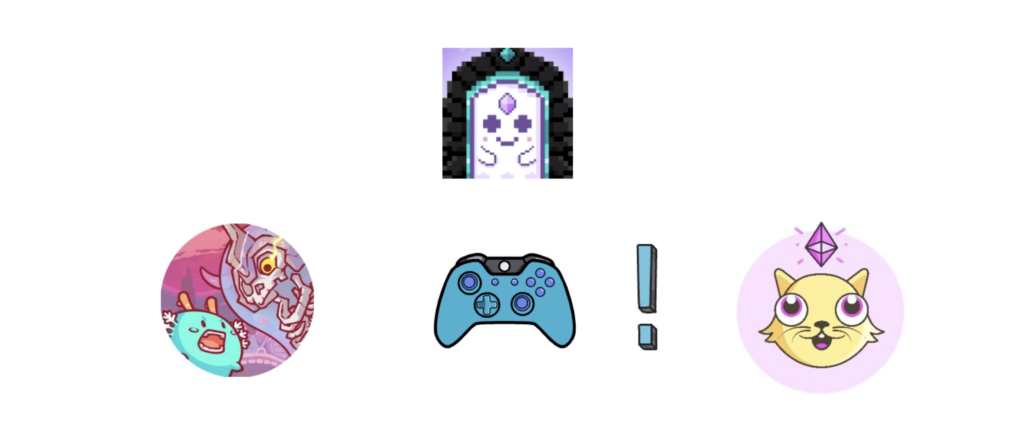
Axis Infinity, CryptoKitties and Aavegotchi are just a few good examples here and they probably deserve a whole, separate article in the future.
Metaverse is another big area with huge potential. For example, the land sold on Decentraland is represented as NFTs. I also wouldn’t be surprised to see more and more popular PFPs being used as avatars in the metaverse.
There are also a lot of non-PFP collections that have become really popular. One of them is EtherRocks where NFTs of different rocks are being sold for millions of dollars. The main feature? They were one of the first NFTs and there are only 100 of them. They were even recently featured in one of the popular business TV programs.
Besides pictures, NFTs can also represent short clips or music.
NBA TopShots became extremely popular at the beginning of 2021 by selling clips of the most viral moments in NBA.
EulerBeats is a set of algorithmically generated music stored on-chain on Ethereum.
Even tweets on Twitter could be sold as NFTs. The first tweet ever by Jack Dorsey was sold in March 2021 for $2.9m.
With new NFT projects launching pretty much every day, we also have to remember about a few challenges of this still extremely new space.
Challenges
To start with, not all NFTs are stored in the same way.
One of the main features of NFTs is their provable ownership, verifiability and provenance. As we know this is achieved by creating NFTs on decentralized blockchains such as Ethereum, but here comes a problem.
Although the beautiful, high-resolution pictures of apes or penguins are cool, there is no way the image files representing them can be stored on the blockchain itself. This leads to a situation when most NFTs only include a link to the actual art and its metadata which is then stored off-chain.
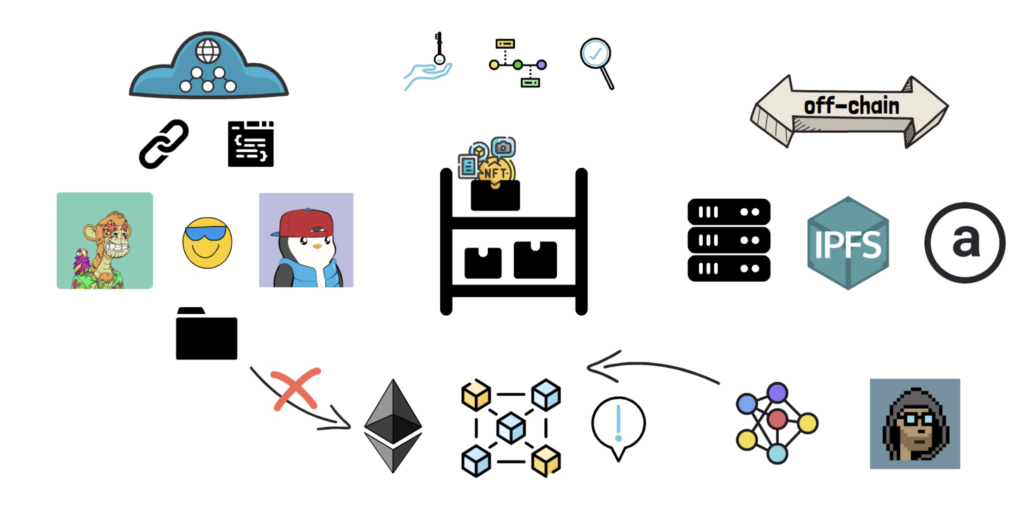
There is a whole range of options when it comes to storing data off-chain. Some projects use centralised servers, others try to improve the situation by uploading their metadata and art to IPFS. Other solutions like Arweave are also gaining traction.
Generative art and certain low-resolution NFTs are some of the exceptions here as they can be entirely stored on-chain.
Intellectual property (IP) rights are also another big issue. This is mostly as there are a lot of inconsistencies between different projects. Some NFTs allow the owners to use them however they want, other projects limit the potential use of their NFTs and still assign the IP rights to the creators.
Ethereum gas fees can also certainly be a problem. Most NFT drops are launched in a “first come, first served” model. This attracts a lot of bot activities and can spike up gas prices to crazy amounts resulting in normal users either not getting into the sale or massively overpaying for their mint. Other models such as dutch auctions, notably used by Art Blocks, are also being explored here.
It will be interesting to see if NFTs get adopted on Layer 2 as this could certainly alleviate some of the gas pressures from Ethereum.
Price discovery in an illiquid market such as the NFT market can also be a problem. Fortunately, there are a lot of projects focusing on tokenizing NFTs which helps with improving liquidity and can be used for things like discovering the floor price of certain collections. NFTx and Fractional Art are some of the popular solutions here.
Another major challenge is the infrastructure for buying, selling and displaying NFTs. At the moment, most trading volume happens on OpenSea where the curation of projects is centralised. It’d be amazing to see OpenSea decentralizing in the future and other more decentralized solutions getting adopted over time.
In the end, I believe that most of these challenges will be solved sooner or later and they are just normal pain points of a completely new and exciting industry.
Summary
Besides Ethereum, which has become pretty much the standard for launching NFTs, there are other layer 1s that allow for minting NFTs. Solana, Tezos and Polygon are gaining some traction in this field.
Another interesting development was the creation of DAOs with the main purpose of buying NFTs. People who wouldn’t be able to afford certain NFTs by themselves can come together and form a DAO. Bought NFTs can be later tokenized and distributed to the members of the DAO. A good example here is PleasrDAO that bought the original Dogecoin NFT for $4m.
It will also be interesting to see NFTs being used as marketing tools. Projects will be able to airdrop their own NFTs or invite certain NFT owners to an early release of their products.
It’s also amazing to see new things being tried in the NFT space. One of which is the recent launch of Loot. Instead of creating an NFT with an image described by certain metadata, Loot flipped the whole process upside down.

The Loot NFTs only contain the metadata that describes a set of items in a hypothetical RPG game. It’s up to the Loot community to decide how to use and even how to visualise these items. It’ll be super interesting to see how far Loot can go in the future. There are pretty much no boundaries on how far such an idea can be pushed but the main challenge is to coordinate the community over long term goals instead of focusing on quick wins like unlimited airdrops.
With OpenSea volume hitting over $3b in July, we’re clearly in a very interesting time for NFTs.
Celebrities using Bored Apes as their profile pictures, major business channels discussing EtherRocks, Visa buying CryptoPunks and new NFT funds popping up.
On the one hand, it feels like NFTs just got their mainstream attention.
On the other hand, the market, with hundreds of projects launching every week, may look a bit overheated.
In the end, it’s worth noting that this is very common in a completely new space and resembles a lot of periods of exponential growth in crypto.
Personally, I think that whatever happens to the market in the short to medium term doesn’t really matter and NFTs are here to stay.
The quality projects will most likely appreciate in value over time. The same cannot be said about thousands of copy-cat projects and low-quality cash grabs.
I believe that NFTs will completely revolutionise the Internet. In the future, most things we own in the digital world will be NFTs. Game items, collectibles, cool pieces of art and even our metaverse gear. All of these have the potential to become NFTs.
So what do you think about NFTs? What are some of your favourite projects in this space?
If you enjoyed reading this article you can also check out Finematics on Youtube and Twitter.




